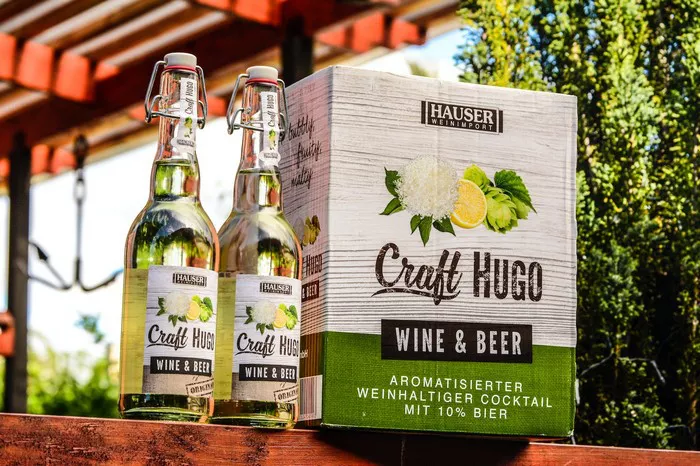Oktoberfest, the world-renowned Bavarian festival, is synonymous with vibrant celebrations, lively music, and, of course, exceptional beer. Central to this annual event is Oktoberfest beer, a unique brew that stands out amidst the plethora of beer varieties available worldwide. But what exactly makes Oktoberfest beer different? To truly understand its distinctiveness, it’s essential to explore the historical roots, brewing methods, flavor profiles, and cultural significance that define this iconic beverage.
Historical Origins and Cultural Significance
The genesis of Oktoberfest beer can be traced back to the wedding of Crown Prince Ludwig (later King Ludwig I) and Princess Therese of Saxe-Hildburghausen in Munich, Bavaria, in 1810. The festival, initially held to commemorate this royal union, featured horse races, feasts, and, notably, local beer. Over time, the festival evolved into an annual tradition, eventually becoming Oktoberfest.
The Reinheitsgebot and Brewing Traditions
At the heart of what makes Oktoberfest beer different lies the adherence to brewing traditions deeply rooted in German culture, notably the Reinheitsgebot, or Beer Purity Law. Established in 1516, this decree stipulated that beer could only contain water, barley, and hops (later yeast was added), ensuring a standard of quality and authenticity in German beer production. Oktoberfest beers, following this tradition, adhere strictly to these ingredients.
Märzen: The Traditional Oktoberfest Beer Style
The traditional Oktoberfest beer style is known as Märzen. Historically, it was brewed in March (hence the name, “Märzen” meaning “March” in German) and stored in cool cellars to be enjoyed during Oktoberfest in September. Märzen beers are characterized by their rich maltiness, amber to reddish hues, balanced bitterness, and a clean, crisp finish, making them ideal for festive celebrations.
Brewing Techniques and Ingredients
Crafting Oktoberfest beer requires meticulous attention to brewing techniques and ingredients. A key element is the use of Munich and Vienna malts, contributing to the characteristic toasty, biscuity, and caramelized flavors. These malts, combined with noble hops such as Hallertau and Tettnang, impart a balanced bitterness and aroma, creating a harmonious beer profile.
Lagering: The Art of Maturation
Another crucial factor that distinguishes Oktoberfest beer is the lagering process. After fermentation, the beer is stored at low temperatures (around 32-50°F or 0-10°C) for an extended period, typically several weeks to months. This lagering phase allows the flavors to mellow, resulting in a smoother, well-rounded taste and enhancing the beer’s clarity.
See Also: is vodka better than beer
The Oktoberfest Experience and Traditional Breweries
Part of what makes Oktoberfest beer different is the immersive experience it offers. Breweries in Munich, such as Hofbräuhaus, Augustiner-Bräu, Paulaner, Hacker-Pschorr, and Spaten-Franziskaner-Bräu, are renowned for producing authentic Oktoberfest beers. These breweries follow time-honored recipes and methods, ensuring a consistent and high-quality product for the festival and beyond.
Modern Interpretations and Variations
While Märzen remains the quintessential Oktoberfest beer style, modern craft breweries both within and outside of Germany have embraced innovation, offering diverse interpretations and variations. Some craft brewers experiment with different hop varieties, yeast strains, or adjuncts, introducing new flavors without compromising the essence of Oktoberfest beer.
Festbier: Evolving the Oktoberfest Beer Style
In recent years, there has been a shift towards Festbier, a lighter and more approachable style compared to traditional Märzen. Festbier maintains the malt-forward profile but with a slightly lighter body and a crisper finish, appealing to a broader range of beer enthusiasts attending Oktoberfest and beyond.
The Global Influence and Celebrations
Oktoberfest’s global popularity has contributed to the widespread appreciation and brewing of Oktoberfest-style beers beyond Bavaria. Craft breweries worldwide pay homage to this tradition by producing their interpretations, allowing beer enthusiasts everywhere to partake in the Oktoberfest spirit, fostering a sense of camaraderie and celebration.
Pairing and Enjoyment
Understanding what makes Oktoberfest beer different is incomplete without exploring its perfect companionship with Bavarian cuisine. Traditional pairings include hearty dishes like pretzels, bratwurst, schnitzel, and roasted chicken, complementing the beer’s maltiness and enhancing the overall gastronomic experience.
Conclusion: Embracing Tradition and Innovation
In essence, what makes Oktoberfest beer different is a harmonious blend of tradition, craftsmanship, and cultural significance. From its historical origins rooted in Bavarian celebrations to its adherence to brewing traditions, Oktoberfest beer continues to evolve while preserving its essence. Whether enjoying a traditional Märzen or exploring modern interpretations, raising a stein of Oktoberfest beer signifies not only a toast to exceptional brewing but also a celebration of camaraderie and tradition that transcends borders. Prost!
In conclusion, Oktoberfest beer stands out due to its historical significance, adherence to brewing traditions, distinctive flavor profiles, and cultural impact. Whether enjoying a traditional Märzen or a modern interpretation, the essence of Oktoberfest beer lies in its ability to bring people together in celebration, fostering a sense of community and appreciation for craftsmanship and tradition.


